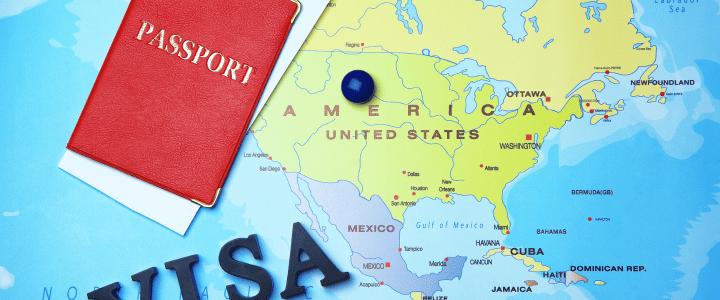Understanding The Dynamics of EB-5 Demand and Supply
When considering a few of the most gainful visa options, the EB-5 visa is always at the top. The EB-5 visa has garnered significant popularity among individuals seeking to move to the USA for better lifestyle opportunities. This surge in visa demand prompted the EB-5 Reform & Integrity Act in 2022 (RIA), causing a reevaluation of the reserved visa categories.
The evaluation of the visa waitlist involves complex variables, while predictions for reserved visa supply require careful consideration. Factors, including UCSIS processing times, processing rate, and applicant response times, can further complicate the process.
In this blog, we will gravely understand the nooks and crannies of the EB-5 visa demand and supply process and all the reformations done to it.
What exactly is the EB-5 visa?
The EB-5 Visa is an immigrant investment visa in the United States that allows foreign nationals to obtain permanent residency by investing and creating jobs in the USA. The EB-5 visa is well-sought-after because of its efficiency, streamlined processes, and other benefits. This visa does not require employer sponsorships and permits the investor & their family to settle, work & travel anywhere in the United States.
To qualify for this visa, the investors must invest:
- At least $1,050,000 into a non-targeted employment area
- At least $800,000 in a designated Targeted Employment Area (TEA) in a high unemployment area.
The investment must create a minimum of 10 jobs (full-time) in the United States within two years of the investor’s arrival to the USA as a permanent resident (conditional).
Now, we must understand how the reformations in RIA affected the visa allocations & demands.
The Impact of the EB-5 Reform & Integrity Act of 2022 (RIA)
After the EB-5 Reform & Integrity Act of 2022, post-RIA investors now have an opportunity to avoid the pre-RIA visa backlog due to the new reserved visa categories. As the demand for the EB-5 visa grows each year, there are concerns about whether there will be enough supply of reserved visas and if there will be a deadline for these categories.
Increased Demand: Understanding the Surge in Interest
The reformations made in the EB-5 visa have made USA immigration much more accessible. It has imposed several advantages for overseas investors, like faster processing times for regional centre program investments in a targeted employment area (TEA). As housing costs have significantly risen, investments made for the EB-5 visa to real estate have become a profitable and attractive option. And this is why the EB-5 Immigrant Investor Program has experienced a notable surge in interest from both real estate development projects and regional centres.
Reserved Visa Categories: A Solution to Pre-RIA Backlogs
Calculating the demand for EB-5 visas is based on assumptions because of miscellaneous factors, including approval rates of these cases and the family size of the approved petitioners. For example, between April 2022 and November 2023, 3,444 people applied for the EB-5 visas. Among these, 32% of the petitions were for rural projects, while 63% were for projects in high-unemployment areas (urban TEAs) and none for the infrastructure category. In addition, 16 petitions were associated with multiple reserved visa categories, potentially qualifying for rural and urban TEA designations.
Understanding the actual visa usage is necessary for evaluating demand and decreasing future waitlists, as 8,136 EB-5 visas have been allocated in reserved categories for Fiscal Year 2024. As per USCIS, they have approved 63 I-526E applications in the 4th quarter of FY2023. The State Department data has revealed that around 3,412 EB-5 visas were issued via consular processing in FY2024 between October 1, 2023 & January 31, 2024, all falling under the unreserved category.
Data regarding utilising EB 5 visas through Adjustment Of Status (AOS) at USCIS is not readily available. Traditionally, the AOS has accounted for more than 20% of EB 5 visa utilisation, with exceptions, during the years. This percentage may see changes following the RIA as more investors are now submitting their I 526/E petitions and I 485 AOS applications concurrently– an advantage introduced by the RIA. However, USCIS does not publish any AOS data categorised by employment-based visa types, making it uncertain whether any allotted EB 5 visa numbers have been used in FY2024 through USCIS so far.
Calculating the EB-5 Visa Waitlist

Several indeterminate factors influence the EB-5 visa waitlist, including:
Approval rate
The approval rate of I-526/E cases is necessary in determining the demand for reserved EB-5 visas. In FY2023, USCIS reported a 100% approval rate with 63 I-526E petitions approved and none denied. However, this trend might be discontinued.
Historically, the approval rate for legacy I-526 cases remained above 80% from FY2010 to FY2018 but fluctuated notably in recent years, dropping to 49% in FY2022 and rising back to above 60% in FY2023. The overall approval rate is 81%, with the highest annual average of 92% in FY2017.
Using a forecast range of 80% to 90%, the estimated number of I-526/E approvals falls between 874 and 984 cases in the rural category and between 1,748 and 1,967 cases in the urban TEA category.
Family Size
Another one of the unknown categories is the family size of EB-5 visa applicants. It is crucial in determining visa demand, as each approved petitioner’s family members are included in the annual visa quota.
Although filing the applications simultaneously may lead to smaller family sizes per application due to factors like younger investors without dependents or children born in the U.S., there isn’t enough data to confirm this assumption.
Demand for Reserved Visas
There is data on the number of I-526/E cases by investment category. However, since it is impossible to determine the approval rate or family size, the waitlist for reserved EB-5 visas varies widely.
For Rural category
Estimated visa demand could range from 1,312 to 2,951, depending on factors like an 80% approval rate and family size of 1.5 or a 90% approval rate and three visas per family. Similarly,
For the Urban TEA category
The calculated range of visa demand would range from 2,622 (with 80% case approval and 1.5 visas per family) to 5,900 (with a 90% approval rate and 3.0 visas per family as inputs), based on similar assumptions and estimated ranges. These calculations highlight the uncertainty in visa demand and suggest that limiting family derivatives from the annual visa could help reduce waitlists.
Aggregate Supply for Reserved Visas
Rural Area
In the fiscal year 2024 (FY2024), 2,286 were available EB-5 visas reserved for rural areas, and 2,799 were from the previous year. For FY2025, an estimated 2,059 visas may be newly available for the rural category.
It’s important to note that carryover visa numbers are a priority before regular EB-5 visas. If any rural visas are used in FY2024, they will be a deduction from the carryover numbers. Assuming all newly available rural visas in FY2024 remain unused and are carried over to FY2025, an estimated 4,345 visas would be available for the rural category.
If the 2,799 carryover visas from FY2024 are not used, there will be a transfer to the unreserved category in FY2025. However, if all the carryover visas were used in FY2024, the total supply of rural visas for FY2024 and FY2025 would be 7,144, which can meet the current demand. Yet, this scenario is far-fetched unless USCIS accelerates the adjudication of I-526/E cases in the remaining year.
High Unemployment Area
Using a comparable approach for the high unemployment reserved visa category, the minimum visa supply projected for FY2024 and FY2025 is 2,173 (assuming no carryover visa numbers are used in FY2024). On the other hand, the maximum estimated supply could reach 3,572 visas if all carryover visa numbers are utilised in the current fiscal year.
Conclusion
This analysis highlights all the data involved in calculating demand and supply for reserved EB-5 visas. While the number of Post-RIA I-526/E petitions provides a starting point, that’s still insufficient.
Based on documented data, the estimates on case approval rates and family sizes demonstrate significant calculation variations.
The main conclusions drawn from this analysis are:
- The supply of EB-5 visa numbers in rural areas appears sufficient to meet current demand (as of November 2023). The estimates suggest that, while up to 2,951 visa numbers may be required based on filed petitions, at least 4,345 visas are available in the rural category until the end of FY2025.
- Petitions for urban TEA categories could range between 2,622 and 6,883 visas, whereas the estimates indicate less than 3,572 visas available in FY2024 and FY2025.
- USCIS’ productivity in processing I-526/E cases in FY2024 is critical to maximising the usage of available visa numbers to address current demand.
- Removing family members from annual visa limits could reduce the visa waitlist, necessitating legislative reforms.

